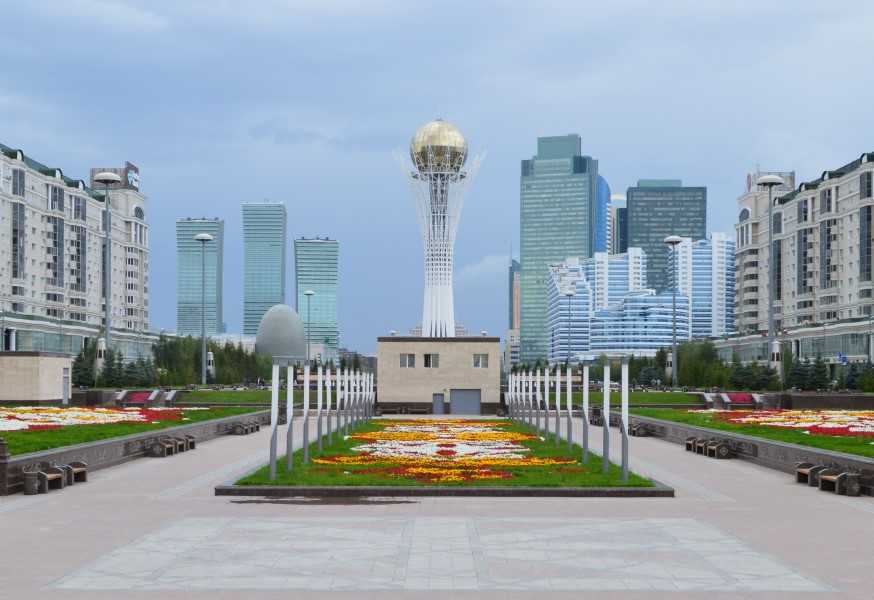Welcome to the city that will be most representative of Kazakhstan’s future. Indeed, the Nur-Sultan, Kazakhstan best things to do includes visits to gleaming new palaces, mosques, monuments and shopping centers. But first, the most intriguing aspect of Kazakhstan’s new capital city is the story behind its location and name changes.
The New City of Nur-Sultan, Kazakhstan
The capital city of Kazakhstan changed locations in 1997. However, to make matters more confusing, the capital city has also changed names three times since then. The succession of name changes goes Almaty (pre 1997) – Akmola – Astana (1998-2019) and currently Nur-Sultan (as of March 2019).
Prior to 1997, Almaty was the capital city of Kazakhstan. However, Almaty’s location was considered to be too risky. The reasons that justified the move include Almaty’s history of earthquakes, limited room for expansion and also close proximity to the Chinese border. Therefore, in 1997, Akmola replaced Almaty to become the new capital city. Then, in 1998 it was renamed Astana which in Kazakh, literally means “the capital”.
However, the capital changed names again in March 2019 to Nur-Sultan. This latest change was to commemorate the the retirement of Nursultan Nazarbayev who had served as the president of Kazakhstan since 1990.
Nur-Sultan, Kazakhstan Cultural Dynamics
Akmola was originally founded in 1830 by Siberian Cossacks. Additionally, Akmola was a remote settlement located in northern Kazakhstan near the Russian border.
In 1999, Astana had a population of 281,000 with 30% Kazakh and 70% Russian, Ukrainian and German. However, since becoming the capital, the population of Astana exploded to 835,000 in 2014 and it is now 65% Kazakh. Additionally, Nur-Sultan, Kazakhstan best things to do includes many new buildings since becoming the capital. Examples include, the Ak Orda Presidential Palace, Bayterek and Khan Shatyr.
The Futuristic Bayterek
The mystical Bayterek features futuristic architecture based on a mythological story. In Kazakh, Bayterek translates as “tall poplar tree”. Bayterek symbolizes an ancient myth about a magical bird of happiness called Samruk. The magical bird has laid an golden egg in the mythical tree of life between two poplar branches.
Bayterek displays the mirrored sphere (egg) 22 meters in diameter and contains 2 observation decks with views of Nur-Sultan. Symbolically, the first deck is 97 meters above ground commemorating the city becoming the capital in 1997.
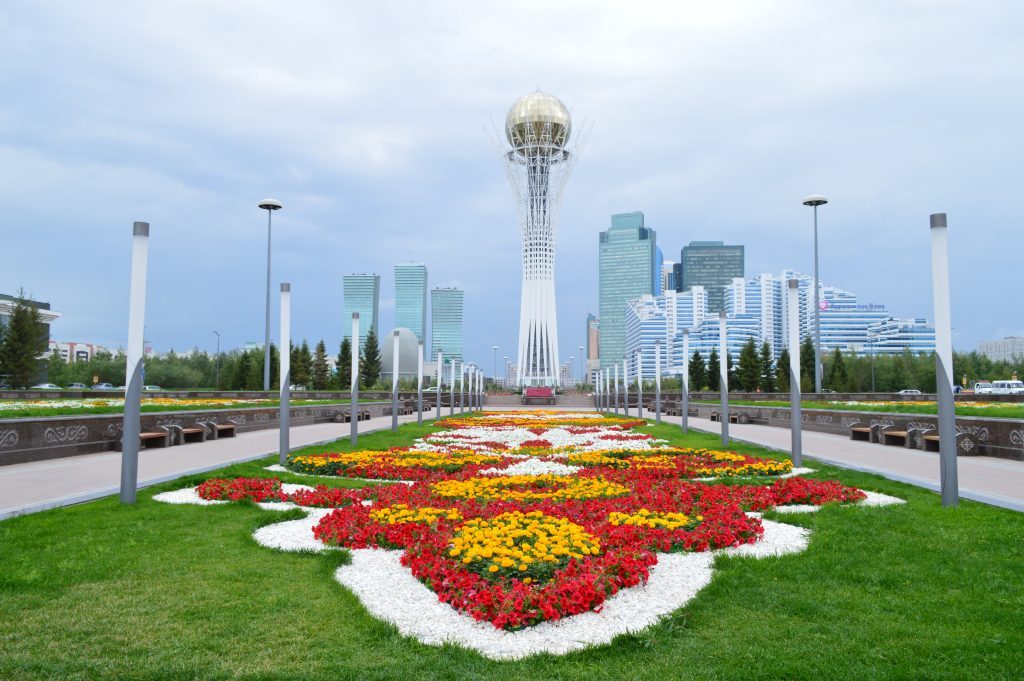
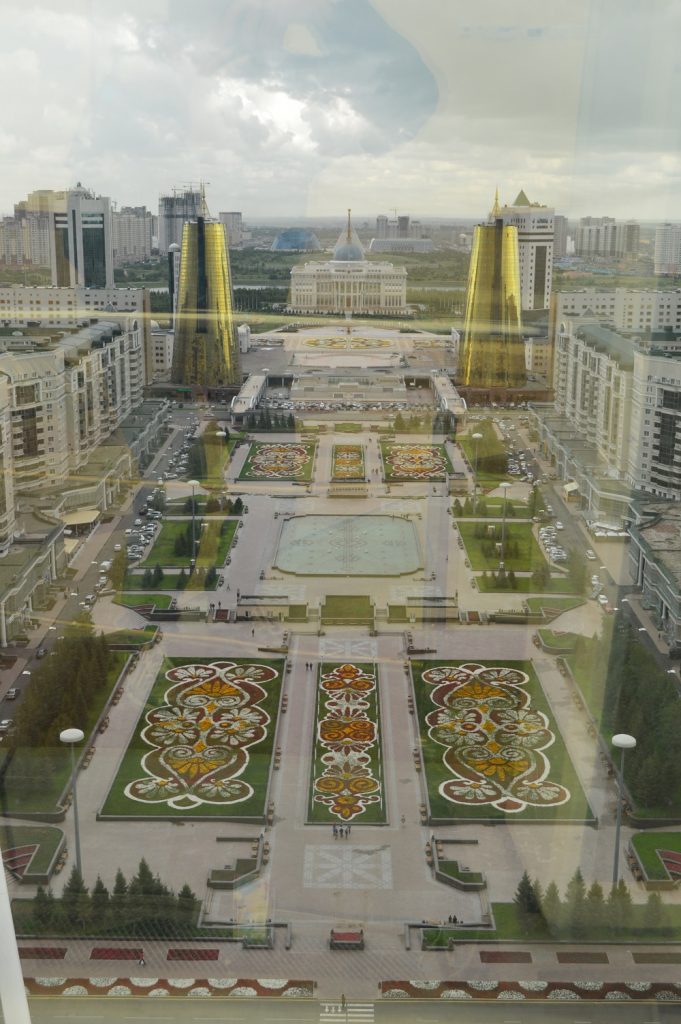
On the 2nd observation deck there is a gilded hand imprint of President Nursultan Nazarbayev. President Nazarbayev was the first president of the Independent Republic of Kazakhstan. Additionally, he has served as president from 1990 until March 2019 when he retired from office. Visitors to Bayterek often place their hand inside of the imprint and make a wish.
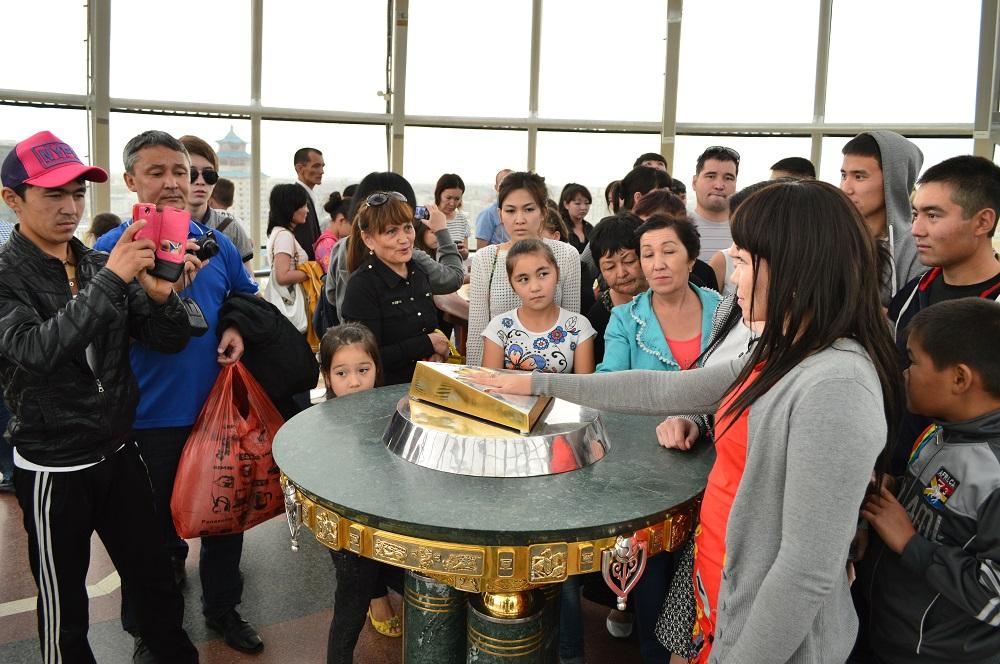
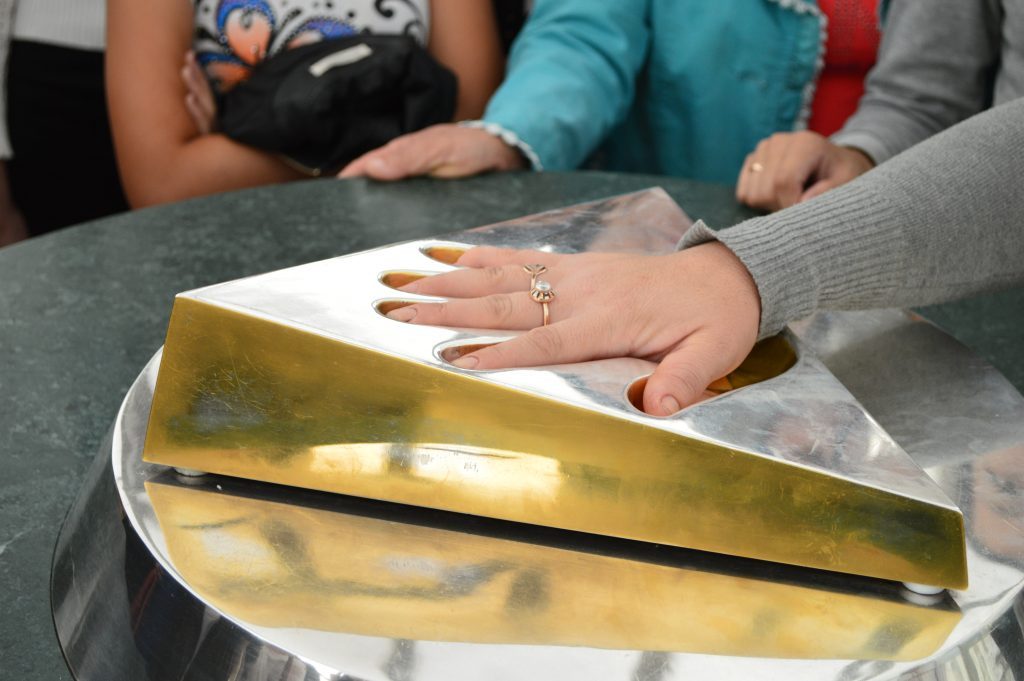
Ak Orda Presidential Palace
Ak Orda Presidential Palace was officially opened in 2004 on the left bank of the Ishim River. Although the palace is the place of work for the president, it is not the presidential residence. However, the palace houses the presidential administrative staff that works at the palace.

Khan Shatyr Entertainment Center
More recently, the Khan Shatyr was completed and opened to the public in 2010. Historically, the Kazakhs have lived a nomadic lifestyle. Therefore, this may explain why the building is actually a giant fabric tent. Even so, the “tent” features modern facilities such as a shopping center, mini golf, a river boating center and even a indoor beach resort.

Efficiently, the fabric tent maintains a moderate internal temperature while outside the climate can fluctuate dramatically. Transparently, the fabric allows sunlight to enter the structure which greatly assists with temperature regulation. Additionally, the structure is 150 meters high at the apex and has an elliptical base covering 35 acres.
Nur-Astana Mosque
The mosque was a gift from the Emir of Qatar following the agreement between him and President Nazarbayev. Nur-Astana Mosque is 40 meters high which is the age of the prophet when he first received revelations from God. Furthermore, the height of the minarets are 63 meters each symbolizing the age of the prophet when he died.
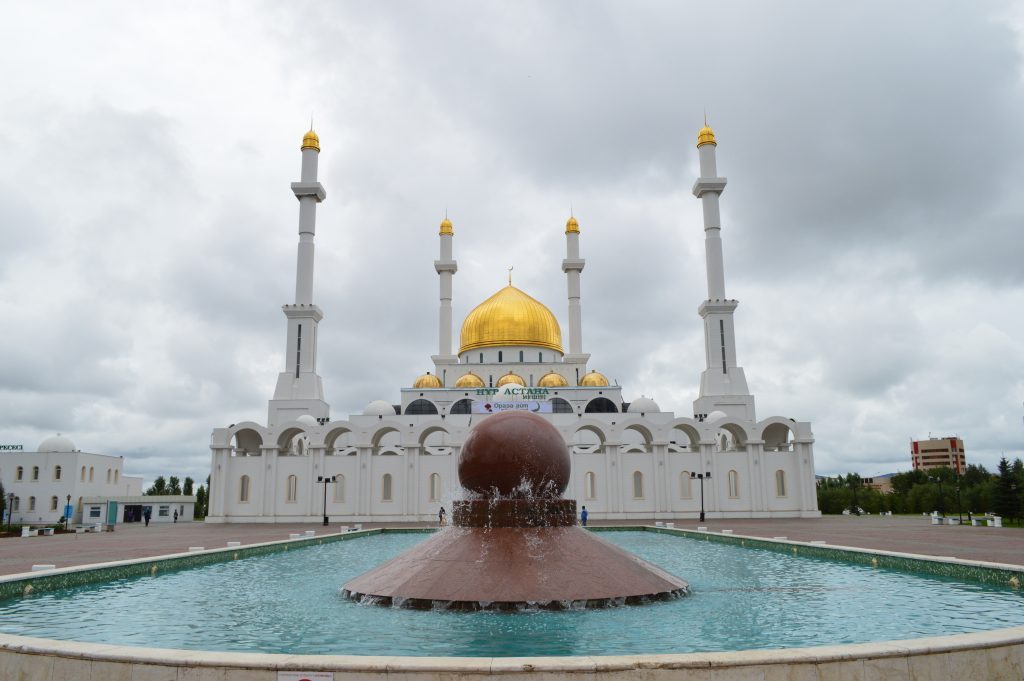
Climate and Geography of Nur-Sultan, Kazakhstan
Nur-Sultan, Kazakhstan is located 1200 kilometers north of Almaty in the semi-arid steppe region that covers most of Kazakhstan. In comparison, the previous capital Almaty was surrounded by the majestic Zailisky Alatau Mountain Range.
Furthermore, the Ishim River separates Nur-Sultan into the older segment on the north side and the newer segment on the south side of the river. Although it is hot in the summer, it is extremely cold in winter. As a result, Nur-Sultan is the second coldest capital city in the world behind only Ulaanbaatar, Mongolia.

